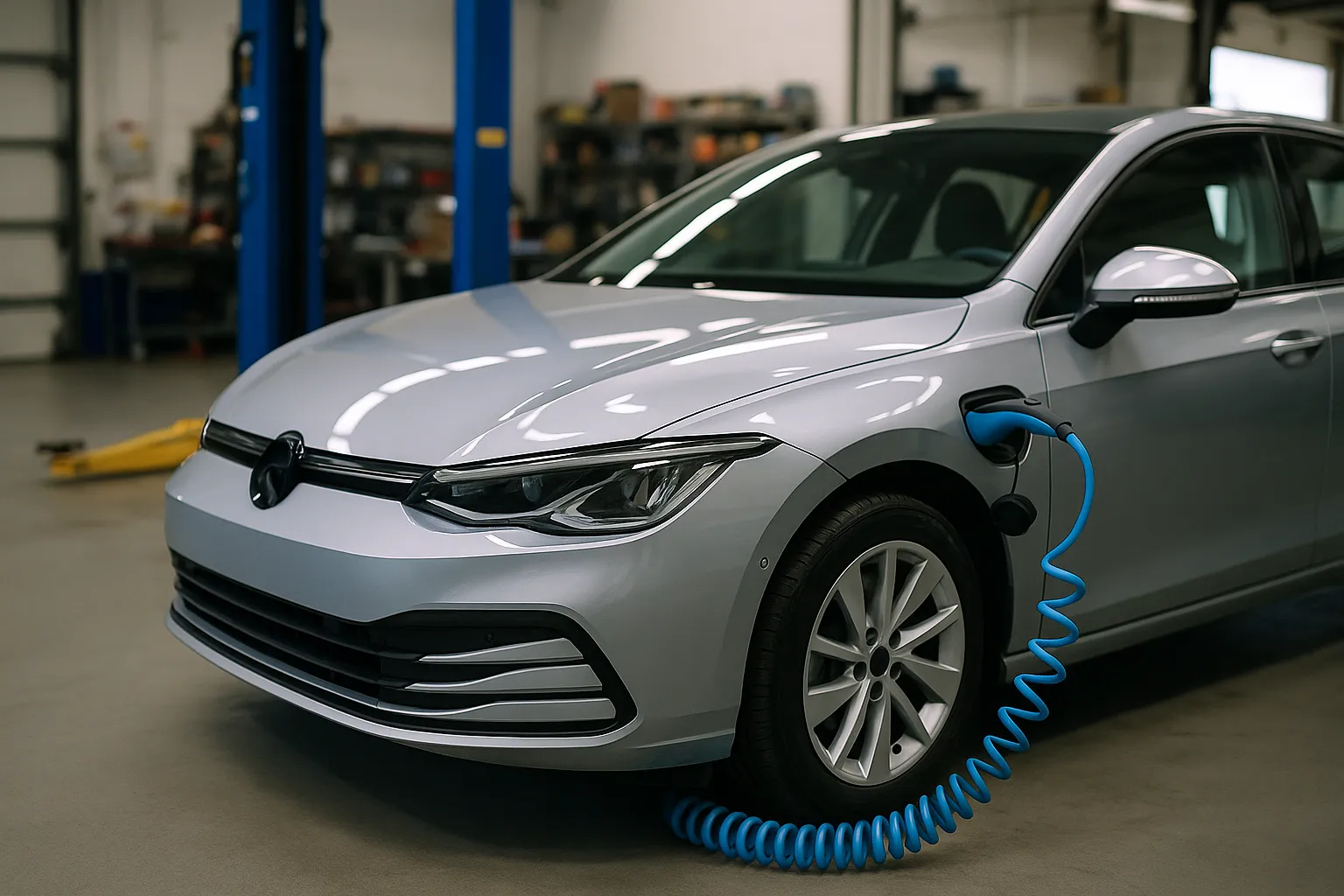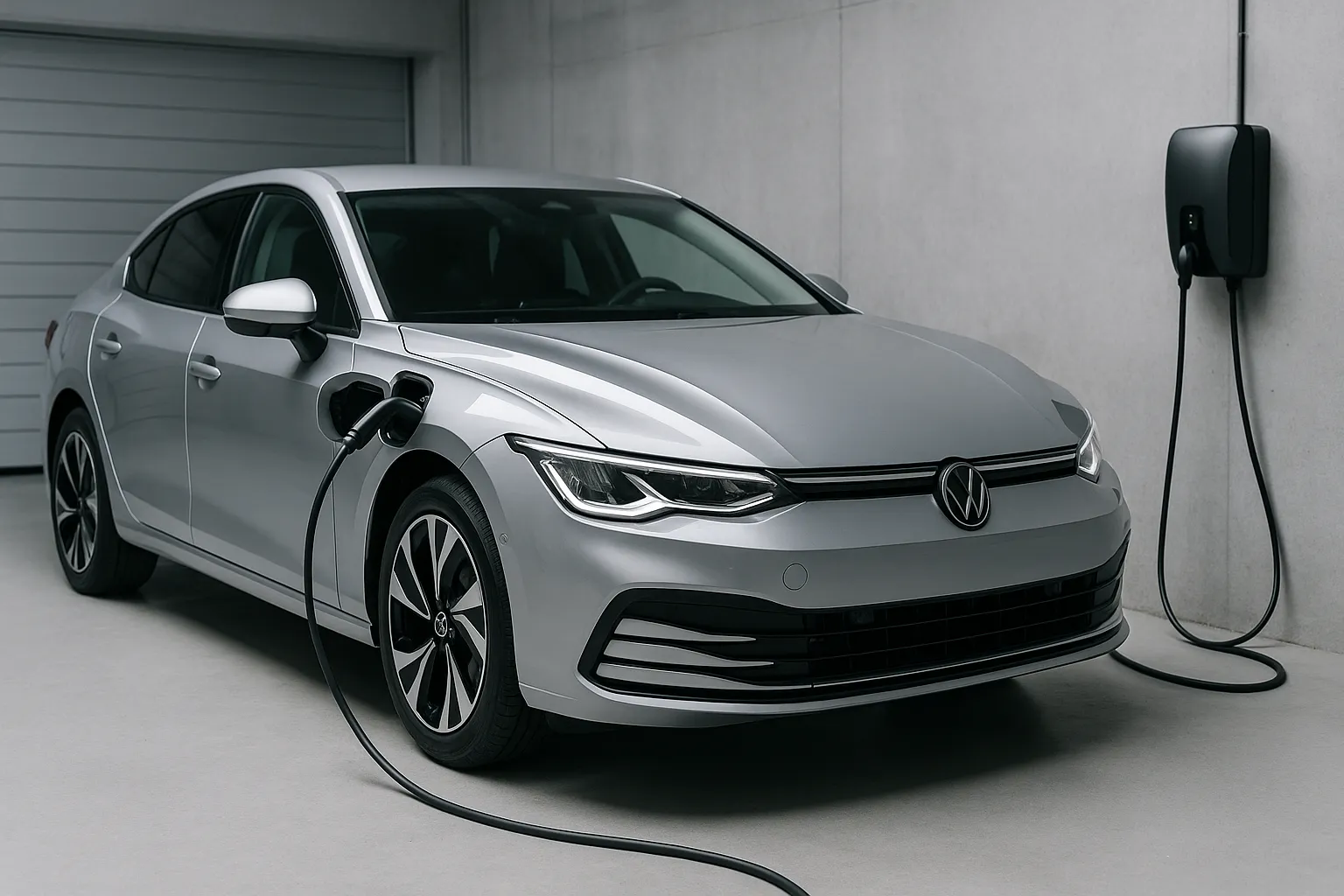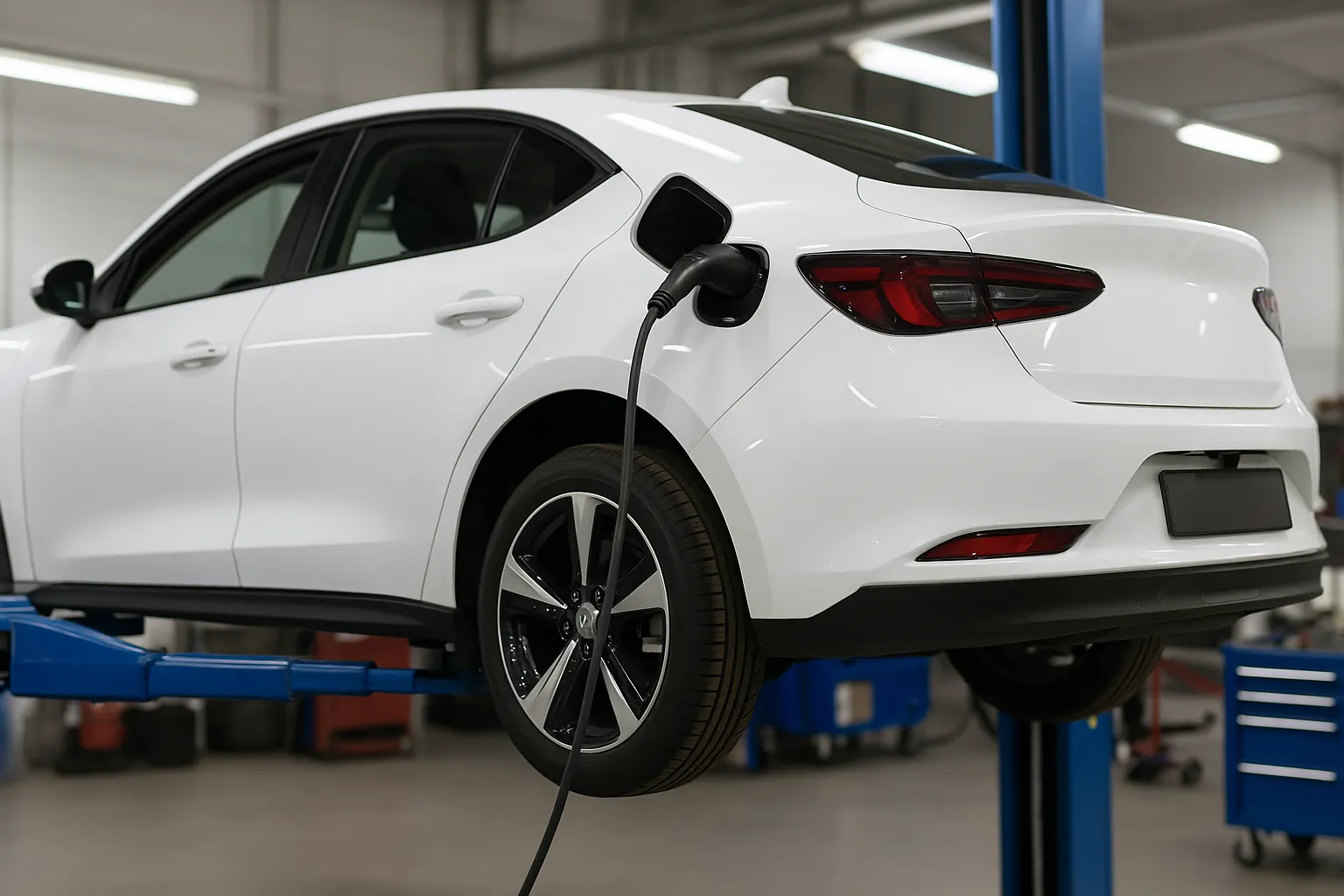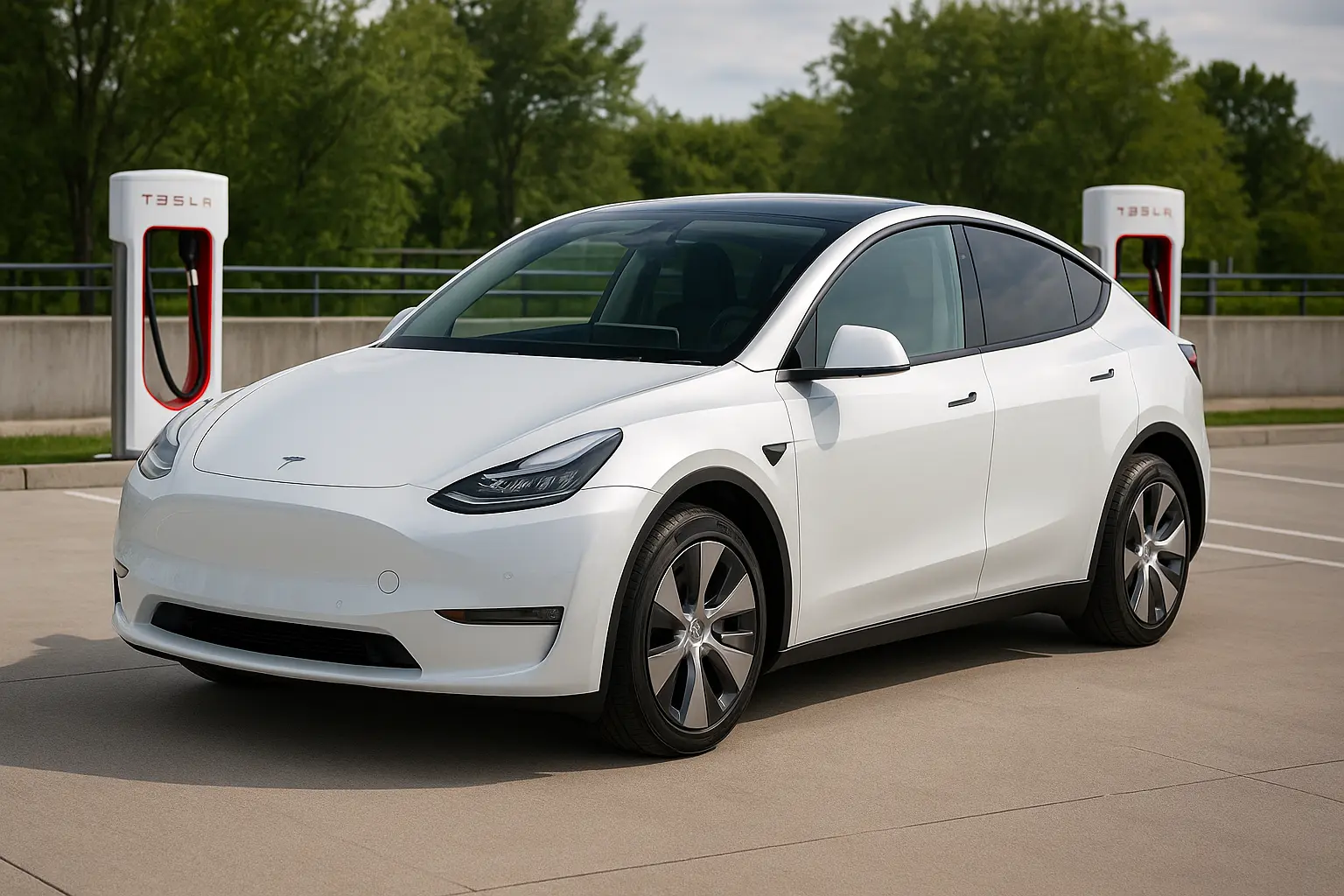Electric Vehicles (EVs) have come a long way in the past decade, and 2025 marks a major turning point in their cost-effectiveness, particularly when it comes to ongoing maintenance. For Australian drivers, switching to electric is not just a move towards cleaner transport but a smarter financial decision—especially in the long run.
Let’s explore in detail why EV maintenance costs are significantly lower in 2025, what components you avoid servicing, how battery longevity is improving, and what this means for ownership across Australia.

🔧 Understanding Traditional Car Maintenance vs EV Maintenance
To grasp why EVs are cheaper to maintain, you need to compare their servicing needs with internal combustion engine (ICE) vehicles.
Internal Combustion Engine (ICE) Vehicles Typically Need:
- Oil changes (every 6,000–10,000 km)
- Transmission fluid top-ups
- Exhaust and muffler repairs
- Timing belt replacements
- Spark plug and ignition maintenance
- Fuel system servicing
- Radiator and cooling system flushes
- Regular brake pad replacements (more frequent)
Electric Vehicles Avoid Most of That:
- No engine oil or oil filters
- No fuel system
- No timing belts
- No spark plugs or combustion-related parts
- No exhaust or emissions systems
- Regenerative braking significantly extends brake life
- Fewer moving parts, which means fewer things to break
Result: EVs eliminate many of the scheduled services required for petrol/diesel cars, reducing both cost and frequency of maintenance.
💰 EV Maintenance Costs in 2025 – Real-World Examples
1. Scheduled Servicing
Modern EVs typically require servicing every 24 months or 30,000 km, compared to every 6-12 months for ICE vehicles.
For example:
| Vehicle | Type | Annual Maintenance Cost (avg) |
|---|---|---|
| 2025 Tesla Model 3 | EV | ~$300 |
| 2025 Hyundai Ioniq 6 | EV | ~$350 |
| 2025 Toyota Corolla (Petrol) | ICE | ~$700 |
| 2025 Mazda CX-5 (Petrol) | ICE | ~$800 |
That's up to 60% savings on annual servicing alone.
2. Brake Pads & Discs
Thanks to regenerative braking, EVs reduce physical brake usage dramatically. Many EV owners in 2025 report brake pads lasting 80,000 to 100,000 km, compared to ~30,000–50,000 km for petrol cars.
3. No Emissions Testing or Exhaust Repairs
As of 2025, states like NSW and Victoria still regulate emissions for older petrol/diesel vehicles. EVs bypass all emissions checks, saving both time and cost.
⚙️ What Do EV Services Typically Include?
While there’s far less to maintain, EVs still need occasional checks. Here’s what your EV might need:
- Battery health inspection
- Software updates (often over-the-air)
- Tyre rotation and alignment
- Brake fluid replacement (every few years)
- Cabin air filter replacement
- Cooling system check (some EVs have thermal management)
But most of this is minor and infrequent, compared to the constant care petrol cars require.
🔋 EV Battery Longevity and Warranty in 2025
The battery is often seen as the most critical and costly component of an EV. In 2025, battery tech has matured, and replacements are far less common than feared a decade ago.
Key Points:
- Most batteries last 10–15 years or more
- Battery degradation is slow (average <2% per year)
- Warranties now extend up to 8–10 years or 160,000 km
- Brands like Tesla, Hyundai, BYD, and Kia lead in battery reliability
Good to Know: Battery replacement can cost $6,000–$15,000 depending on model—but most Aussie drivers won’t need to replace it during the life of the car.
🔌 Software-Driven Maintenance: The EV Advantage
EVs in 2025 are software-defined vehicles. This gives them a unique edge:
- Over-the-air updates keep your EV running at peak efficiency
- Many issues can be diagnosed or fixed remotely
- Performance upgrades (like acceleration boosts) can be added post-purchase
- Preventive diagnostics help avoid mechanical failures
This reduces visits to the service centre—your EV can self-report issues before they become costly.
🛠️ Maintenance-Free EV Components (Compared to ICE)
Here’s what you don’t need to worry about with an EV:
| Component | ICE Vehicle | EV |
|---|---|---|
| Engine oil & filter | Yes | ❌ |
| Transmission fluid | Yes | ❌ (many EVs use direct drive) |
| Spark plugs | Yes | ❌ |
| Fuel filters | Yes | ❌ |
| Timing belts/chains | Yes | ❌ |
| Emission system | Yes | ❌ |
| Muffler & catalytic converter | Yes | ❌ |
| Radiator flush (engine cooling) | Yes | ❌ (EV cooling is minimal) |
🏁 Cost of Ownership: EVs Win Long-Term
Beyond maintenance, EVs save Aussie drivers money in several ways:
Fuel Savings:
- Petrol: $1.80–$2.20 per litre
- EV charging: ~$0.25–$0.40 per kWh
- Running cost: EV = ~3–6 cents/km, Petrol = ~12–20 cents/km
Over 15,000 km/year, that’s $1,500+ saved annually on fuel alone.
Lower Registration and Insurance:
- Many states offer registration discounts or stamp duty waivers for EVs
- Insurance is often slightly lower due to fewer moving parts and longer intervals between claims
Resale Value:
- EV resale value is stabilising, especially for trusted brands
- Used EVs with good battery health reports retain up to 70% of original value after 5 years
📈 What Drives Down EV Maintenance Costs in 2025?
- Mature Technology – 2025 EVs use refined battery packs and electric drivetrains with fewer failure points
- Less Mechanical Complexity – Fewer moving parts means fewer breakdowns
- Predictive Maintenance – AI-based alerts notify owners before something goes wrong
- No Fluids, Filters, or Exhaust Work
- Government Incentives – Rebates for chargers, reduced rego, and lower servicing incentives for green vehicles
🇦🇺 EV Maintenance in Australia – Brand Breakdown
Let’s look at what some leading EVs offer in terms of service intervals and costs in 2025:
Tesla Model Y (RWD)
- Service: As-needed only
- OTA updates, minimal brake wear
- Avg annual cost: ~$300
Hyundai Ioniq 6
- Service interval: 24 months / 30,000 km
- Battery & cooling checks only
- Avg annual cost: ~$350–400
Kia EV6
- Warranty: 7 years unlimited km (battery + vehicle)
- Lower brake use thanks to regen braking
- Avg cost: ~$400/year
BYD Atto 3
- Basic inspections + software updates
- Most owners report <$300 in yearly costs
🚗 Should You Still Be Concerned About EV Servicing?
Here are a few challenges still present:
- Battery replacements outside warranty can be expensive
- Tyre wear is higher due to EV weight and torque (rotations needed often)
- Repair network is still growing—rural areas may have fewer qualified EV techs
- Insurance policies may still be cautious about EV battery damage
However, these concerns are steadily fading as the EV ecosystem matures in Australia.
🧰 Tips to Reduce EV Maintenance Costs Even More
- Use regenerative braking often – switch drive modes to maximise energy recovery
- Keep software updated – improves battery life and efficiency
- Stick to scheduled checks – especially for tyres and cooling
- Charge at moderate speeds – avoid constant DC fast-charging to extend battery life
Store in a garage – to protect battery from extreme Aussie temperatures
🔍 Final Verdict – Are EVs Cheaper to Maintain in 2025?
Absolutely. The data, real-world experience, and industry evolution all point to one fact: electric vehicles in 2025 are far more cost-effective to maintain than their petrol or diesel counterparts.
With:
- Fewer moving parts,
- Rare servicing needs,
- Predictable software-driven diagnostics,
- Extended brake and battery life,
- Government support,
…EVs are not just the greener choice—they’re the smarter choice for Aussie car owners in 2025.

👇 Summary: Key Takeaways
- EVs eliminate costly servicing items like oil, spark plugs, and exhausts
- Brake and tyre servicing is less frequent thanks to regenerative braking
- Software and OTA updates reduce workshop visits
- Battery technology now offers up to 15 years of usable life
- Most EVs cost 50–70% less to maintain annually than ICE vehicles
- Ongoing government incentives support EV affordability in Australia
Leave a comment
Your email address will not be published. Required fields are marked *




















